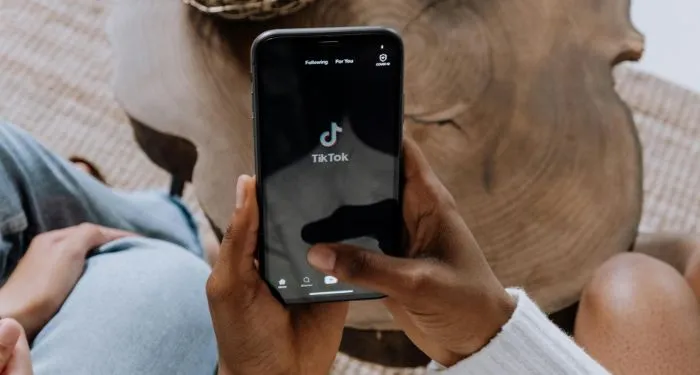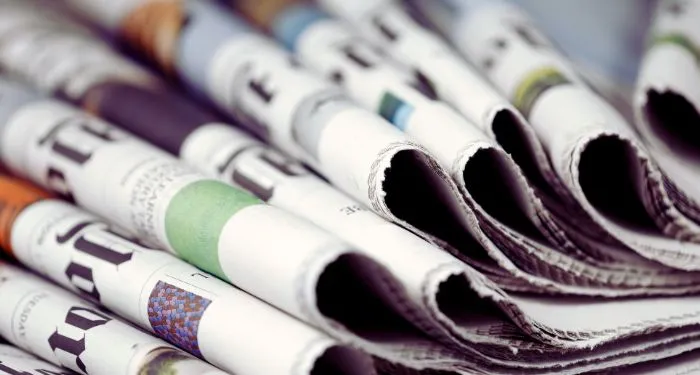For years I have been working on a documentary film about young Muslims in France, centered on the 2017 trial that convicted a police officer of killing a young French Arab man some years earlier. In 2016 I interviewed Yasser Louati, a civil rights advocate and political analyst. A former pilot, Louati became one of France’s most prominent voices against Islamophobia, founding an antiracist organization called the Committee for Justice and Liberties in 2017.
Most imams in France, Louati said when we talked last year, come from countries in North Africa or the Middle East or South Asia “where religion is at the service of dictatorship” and have gotten used to deferring to the state. As far as he could tell, such leaders had put up little resistance to the discriminatory laws that France’s legislature has passed against Muslims in recent decades, such as the 2004 ban on wearing the hijab in schools. Foreign imams working in the West, he insisted, have a vested interest in “depoliticizing” their congregations, “making religion about superstitions and rituals.”
Louati told me that, for an alternative vision, he kept turning to Malcolm X, whom he had discovered when he saw Spike Lee’s biopic at the age of twelve. Growing up, he said, he wasn’t used to hearing a Muslim speak about liberation. In Lee’s portrayal of the American civil rights leader, he found a practice of Islam that aligned with his understanding of social justice and equality.
It was hardly surprising that Louati looked to the United States for a more socially engaged vision of the faith. Muslims in the US are among the most culturally, ethnically, and racially diverse in the world. Surveys have shown that by 2040 they will comprise the country’s second-largest religious population (after Christians), due both to increased immigration from Muslim-majority countries and to a rise in conversions. They have also been continuously vilified in mainstream American discourse. That animosity intensified still more sharply in the aftermath of the September 11 attacks; it soared again after the Hamas attacks of October 7, 2023, and the beginning of Israel’s war on Gaza.
Both these factors have put Muslim American spiritual leaders—imams, who serve in mosques, and chaplains, who operate in multifaith environments—in a distinctly sensitive position. The escalating Islamophobia of the past two decades has required them to expand their remit far beyond that of their counterparts in Muslim-majority countries: not only do they need to provide spiritual guidance, they need to help their constituents navigate bigotry, surveillance, and stigmatization in a society that keeps insisting they prove their humanity.
Even as these Muslim American faith leaders face mounting challenges from without, many are also navigating shifting dynamics within their congregations. Society in the US has been steadily secularizing as many worshippers drift away from institutional authority, and Muslim communities are no exception. Younger believers have lately been pushing for more pluralistic practices in their mosques, from gender-inclusive prayer spaces to interfaith outreach and community programs like mental health and drug addiction services.
Imams who did their religious education abroad often struggle to adapt to these conditions. In the past fifteen years a cluster of institutions have emerged in the US with the goal of addressing that problem by training a new generation of Muslim American religious leaders. Texas has the Islamic Seminary of America just outside of Dallas, founded in 2011; Massachusetts has the Boston Islamic Seminary, established in 2018; and, in Illinois, the Bayan Islamic Graduate School, a seminary founded in 2011 through the Claremont School of Theology, offers periodic in-person coursework to supplement the online classes it conducts year-round. All nonprofit and nondenominational, usually with relatively small cohorts of students, they sometimes collaborate with Christian seminaries to encourage interfaith dialogue.
I watched these institutions emerge with interest. Born and raised in Morocco, I had never thought much about what it meant to be Muslim until I moved to the US for college in January 2003, at the height of the “war on terror” and the Islamophobia it stoked. On my second or third day in the US, I stood in line out in the cold at the Federal Plaza building in downtown New York along with thousands of other Arab and Muslim foreigners who had been ordered to register their presence with the authorities. Everyone there knew well what it felt like to be singled out because of our religion and ethnicity.
Over the following two decades, I thought increasingly about the necessity—especially in difficult times for Muslim communities—to have a network of clerics who could not only fulfill a religious need but also participate in the fight for civil rights. As a new generation of imams was being trained in the US, I found myself wondering about their lives and backgrounds. What could they tell us about the shifts underway in Muslim American identity?
In the fall of 2023 I decided to observe five days of classes at Bayan, which was hosting its triannual two-week intensive at the Chicago Theological Seminary that October. I found a community there that was at once deeply connected to its roots and experimenting with new ways of teaching the faith. “Islam in Africa looks very African,” the school’s founder, Jihad Turk, told me in one of our many conversations, from “the cultural sentiment” it embodies to the clothes its practitioners wear. “Islam in India looks very Indian. What does it mean for Islam to look very American?”
*
In a recording of one of Bayan’s online courses, the scholar Sherman Jackson starts with a provocative exercise. “By a show of hands,” he asks the class, “how many people have heard of Lamine Kebe?” Silence. “What about Yarrow Mamout?” One student raises a hand. “Omar Ibn Said?” A few more follow. “Frederick Douglass?” Every hand goes up. “The first Muslims in America were Black Africans,” he goes on, “but nobody has heard of any of these people.”
Those first Muslims in the territory that would become the US were West African slaves who were brought to North America starting in the sixteenth century. In his 1831 autobiography, the only known narrative of an enslaved person in the US written in Arabic, Ibn Said—a highly educated scholar from a Fulani family along the Senegal River—recalled the years before his captivity:
I used to walk to the mosque before dawn, and to wash my face, head, hands, feet. I used to hold the noon prayers, the afternoon prayers, the sunset prayers, the night prayers…. I reside in our country here because of the great harm. The infidels took me unjustly and sold me into the hands of the Christian man who brought me.1
In the early twentieth century Muslim American groups formed that defined their religious identities around the experience of Black struggle. Among them were the Moorish Science Temple of America, the Ahmadiyya Muslim Community, and most famously the Nation of Islam, which had a central part in shaping Black Muslim identity. One of the biggest mass conversions of African Americans in US history took place after W. Deen Mohammed succeeded his father, Elijah, as the head of the NOI in 1975 and overhauled the movement’s teachings to align with those of mainstream Sunni Islam. (Later, under Louis Farrakhan, the movement would recommit to some of its more separatist ideology.) Malcolm X himself famously foreshadowed this shift toward an Islam with more diverse adherents in his widely distributed letter home from the Hajj in 1964, which describes how his time there profoundly transformed his attitude about the possibility of cross-racial solidarity:
There were tens of thousands of pilgrims, from all over the world. They were of all colors, from blue-eyed blonds to black-skinned Africans. But we were all participating in the same ritual, displaying a spirit of unity and brotherhood that my experiences in America had led me to believe never could exist between the white and the non-white.
Religious instruction for African American Muslim leaders during these decades was often necessarily informal, given the absence of institutional support. Omer Bajwa, one of the early cofounders of the Islamic Seminary of America and the director of Muslim Life at Yale University, told me that Black American clerics did crucial work with “limited knowledge and formal training and exposure,” from leading prayer in mosques to serving as chaplains in prisons, hospitals, and the military.
Today about a fifth of American Muslims are Black. They pray alongside the children and grandchildren of immigrants from Muslim-majority countries, who started arriving in the US in greater numbers after the abolition of immigration quotas in 1965. These newer arrivals built mosques, imported imams, and in some cases got their own advanced education in countries with established Muslim institutions, such as Egypt, Saudi Arabia, and Pakistan. There they would make a rigorous study of the Quran, learn Arabic, and explore various interpretations of Islamic law, often returning with this knowledge to lead nascent congregations in the US.
Even as these institutions have taken shape, they have yet to put forward a shared vision of what American Islam should look like. “Islam is the most disorganized organized religion,” Turk told me. In Sunni Islam there is no established hierarchy among religious authorities. Becoming an imam sometimes involves obtaining a certification from a local mosque, seminary, or national or international institution, and every mosque, according to Turk, determines its own criteria: some require memorizing the Quran (known as becoming a hafiz); others don’t. Informal training of imams remains prevalent. According to a recent survey, just half of American mosques employ a full-time imam; of those spiritual leaders, in 2020 almost a quarter were born in the US, an increase from 15 percent in 2010. Yet most of those American-born clerics still went abroad for training; only a handful received their Islamic degrees at home.
Several members of the community I interviewed stressed that this was a meaningful distinction. In majority-Muslim countries, religious learning is part of everyday life and woven into the dominant social conventions. In Kenya, to name just one example, it is deeply intertwined with Swahili culture, which mixes African, Arab, and Persian influences. Religious festivals like Mawlid, which marks the prophet’s birth, are celebrated there with Swahili poetry, drumming, and processions—a distinctly local expression of Islamic devotion. In such places Islam “is just in the air,” Bajwa said. “You hear the call to prayer; you are surrounded by religion.” For imams, this means that “the community already knows your function.”
The task of imams in the US is markedly different: to guide their congregants through civic life in a country whose dominant culture is secularizing, pluralistic, and systematically Islamophobic. This puts a heavy burden on religious leaders who are also striving to bridge generational and cultural differences and claim an important place in the lives of their congregants. “You have to do interfaith [outreach], answer the media, do counseling, get the youth engaged,” and attend to their mental health, Bajwa told me. The result is often, as he put it, “high burnout.”
*
If clerics working in the US need grounding in the “cultural realities of America,” as Bajwa told me, what would it mean to train them? Only in the past two decades have formal institutions been founded with that mission in mind. Bayan, the first accredited Islamic graduate seminary in the US, had an unlikely point of origin. In 2009 the Claremont School of Theology, a Christian seminary, was promised grant funding from its benefactor David Lincoln—a businessman and philanthropist with a staunch commitment to interfaith education—to create a multifaith consortium. That same year, representatives from the school reached out to Turk and asked whether there was a Muslim institution to partner with. He told them, he recalled to me, that no such thing existed yet—“and they needed one.”
Born in 1971, Turk was raised in Phoenix, Arizona, by a white Christian American mother and a Muslim Palestinian father who arrived in the US from Jerusalem at seventeen. “Culturally speaking, we grew up in a very American household, but with some Arab and Islamic flavor,” he told me in Chicago. He learned to pray and to speak a little of the Palestinian Arabic dialect; with his four siblings, he attended small Sunday school classes at a private home. “I used to try and negotiate with my father on how I could avoid going to Sunday school,” he remembered, because “that’s when football would be on television.” By age nineteen he could read the Quran very slowly in Arabic, but without really understanding it.
Growing up he and his siblings attended a Muslim summer camp in California, one of the first in the US, and later the Muslim Youth of North America’s winter program in Plainfield, Indiana, where Turk met young scholars from Sudan, Pakistan, and other Muslim countries. Intrigued by his campmates, he started reading widely about religion. When he enrolled at Arizona State University in Tempe it was to study engineering, but he also took courses in philosophy that, to his dismay, skipped Muslim thinkers.
In college he grew increasingly interested in the Islamic tradition and resolved to learn more Arabic. When he met an imam from Guyana who had learned the language at the Islamic University of Medina in Saudi Arabia, he saw a path to satisfying his growing curiosity—so he withdrew from ASU and enrolled at the Islamic University instead. “I wanted to have access to the sources so I could understand them in their original form,” he told me recently. He was also drawn to Saudi Arabia, he said, because at the time “the dominant influence in Muslim communities in the United States was an expression of Salafi Wahhabism,” a conservative and rigid interpretation of Islam with roots in that country; he wanted to understand it more fully, even as he thought it missed something of “the essence of the faith.”
He arrived in Medina in 1990, not long after the start of the first Gulf War. On the austere campus he met students from all over the world; he had roommates from Cambodia and Zimbabwe. But he was keenly aware of his own national identity: a cousin from his mother’s side was stationed with the US military in Riyadh. One night, walking in the desert under a full moon, he realized he was an “American kid” who belonged at home. “The war was raging, and I said, okay, I want to come back and change my major from engineering to Islamic Studies and Arabic,” he told me. “I want to become a professor and teach the classes that I wish I could have taken.”
He spent two years at UC Berkeley, another year in Tehran studying Farsi, and eight years at UCLA, where he pursued a doctorate but never finished the program. (He would get a doctorate in education years later from the University of Southern California.) By the time Claremont approached him in 2009 he had been working for four years as the imam of the Islamic Center in Los Angeles, doing interfaith work, hosting programs to attract young professionals, helping couples get married, and organizing a food pantry. When Bayan launched two years later, it had three students; now it has about 120.
*
Since 2019 Turk and his students have convened for a couple of weeks three times a year at the Chicago Theological Seminary. Some of the students I met there were already imams or chaplains—many of them women—or worked for nonprofits; all were clearly hoping to take on more significant leadership roles in their communities. For many of them this was an intensely personal project: several suggested to me that they had struggled to reconcile their families’ cultural identities with their own.
It was cold and rainy, but a group of us still went for a boat ride. Faraaz Yussuf, thirty-seven, who does fundraising for the school, joined with his wife, Sarah. She had grown up in Lahore and moved to the US as a teenager; he was born in the states to parents who had immigrated from India. During much of his childhood in Minneapolis, he attended the Friday evening Quran recitation at the local Masjid and Sunday school at the Islamic Center. For his parents, Yussuf said, going to the mosque “was what preserved the culture they brought with them.” But it was a culture to which he struggled to belong: foreign imams sometimes didn’t speak English well or used references from another era. It took time, he told me, for him to find peers and mentors who could help him feel like himself in the faith.
I heard a parallel story from Bilal Elsakka, a working imam and current Bayan graduate student, who grew up in the San Francisco Bay Area with a white American mother and a father who had spent his childhood in Egypt. They met in Germany while traveling and later reconnected in the US, where his mother converted. Elsakka went to an Islamic school full-time until the eighth grade, when he moved to a public school. When he was sixteen, his parents ended their twenty-two-year marriage and his father moved back to Egypt. Elsakka had to work to help support his mother and two brothers; they moved from a big house to a tiny apartment with no immediate family nearby. Struggling “to make sense” of it all, he remembered, he picked up a biography of the prophet Mohammad. Discovering Islam offered “so much peace and meaning,” he told me. “I want to share that meaning.”
By 2012 he had a college degree in communications but was studying daily to learn the entire Quran in Arabic. He was hired as the youth coordinator at a local community organization, teaching religion courses and delivering the Friday sermons. To qualify as an imam he received not a written document, he said, but a “grassroots certification”: his mother worked at a local Islamic school, where the community trusted and respected her and was thus quick to embrace him. In the fall of 2013 he became the imam of the West Valley Muslim Association in Saratoga. These were challenging years for the faith: young people seemed to be “leaving Islam left and right,” Elsakka told me, in some cases because they didn’t feel welcome in the mosque. His relatively accessible American background, he thought, was part of his appeal.
Shazia Aslam, a family medicine physician from Minnesota in her forties who grew up in Karachi, echoed Elsakka’s emphasis on the need for what he called a “homegrown” American Islam. She enrolled at Bayan so that she could pass what she learned on to her four daughters. “I don’t want them to feel…inferior while they’re here” in the US, she told me. “They are born here. They’re gonna be here.”
*
I had initially approached Turk with the idea of documenting the emergence of a distinctly American form of Islamic religious and cultural thinking. Only as we spent more time together did the full implications of that question come into view. I arrived at Bayan five days after Hamas attacked Israel and Israel began its devastating military campaign against Gaza. Israel’s war on the Strip was driving Islamophobia in the US to new heights: the following July the Council on American-Islamic Relations (CAIR) would report that it had gotten 69 percent more complaints in the first half of 2024 than it had over the same period a year before. When I visited Bayan the energy was quiet, heavy with an unspoken awareness of the unfolding tragedy in Gaza and the rising tide of anti-Muslim sentiment.
On the last day of my trip Turk went to Bridgeview, a Chicago suburb with a neighborhood known as “Little Palestine” for its Palestinian population, the largest in the US, dating back to the late nineteenth century. He was there to attend the funeral of a six-year-old Palestinian boy, Wadea Al-Fayoume, who had been murdered by the family’s landlord. I asked if I could accompany him.
I sat in the basement of the mosque with the women during prayer; Turk was upstairs, where the small white coffin lay. The mosque was packed with people wearing keffiyehs; a crowd prayed outside and rallied around Wadea’s father when he came out to briefly address the media. “My son is a gift, my son is a martyr—and I hope that people in Gaza accept him as one,” he told the reporters in Arabic. “They say we Muslims are criminals and terrorists and Israelis are heroes.”
Turk rarely showed emotion in the days we spent together in Chicago, but sometimes it seemed to me that behind his outward optimism he felt powerless over the violence in Gaza and the increasingly hateful and dehumanizing discourse it had inspired toward Muslims and Arabs in the West. In the days after the start of the war, his brother, Omar, who lives in East Jerusalem, sent him a video. It showed Omar cheerfully playing with a dog and his grandson. Turk read me the text: “If anything happens to me, send this to the world.” As Turk held out his phone, I saw a flicker of heartbreak on his face. He was training his students to serve a community that had arguably never needed them more—and surrounded by reminders, big and small, of just how much they were up against.

























 English (US) ·
English (US) ·